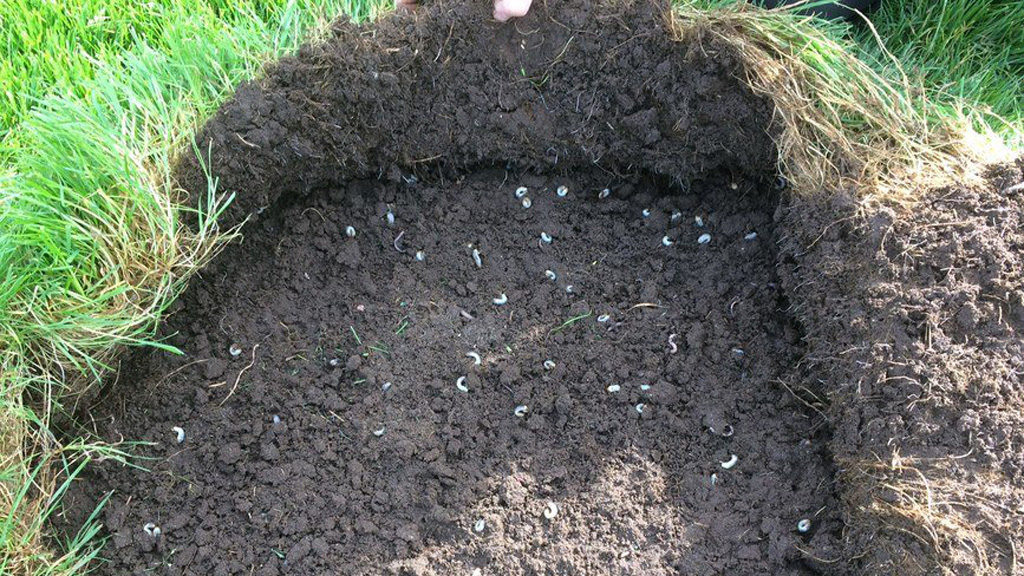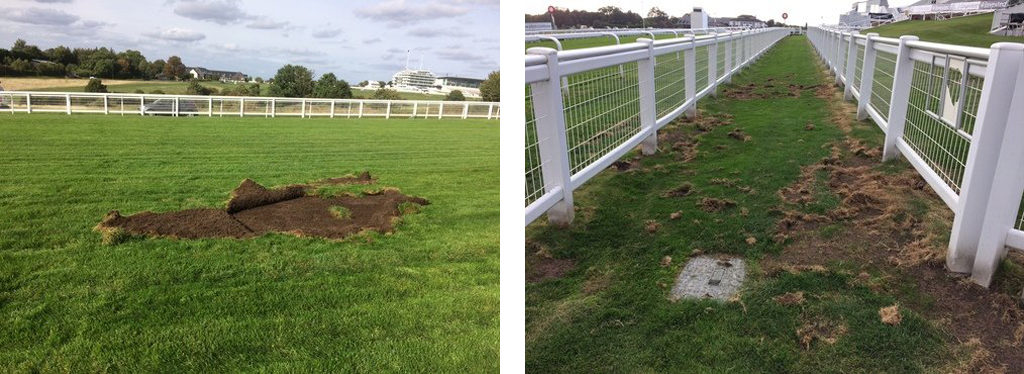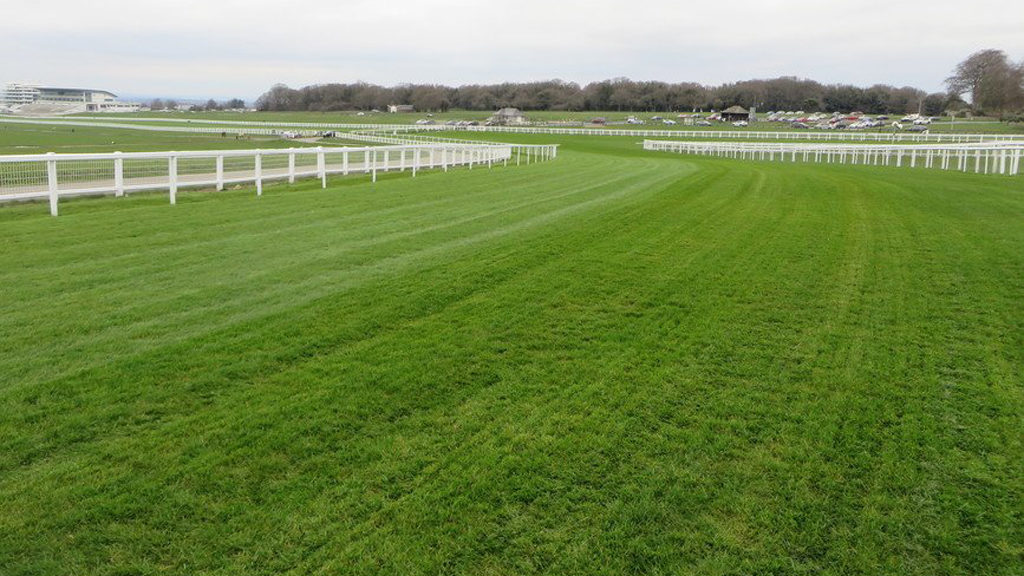Good going at Epsom for chafer control

| First published in Pitchcare magazine (Issue 84 April/May 2019), Derby dreams dominate at Epsom, included how Estates Manager, Craig Williamson, and Clerk of the Course, Andrew Cooper, are working to tackle chafer grub issues. Read the full report here. |
Chafer grubs were first observed on the track at Epsom in 2008, and their impact felt in 2009. The building of a new grandstand meant that the course was only used for the Derby meeting for two years, and the limited programme seemingly allowed the grubs to become more established, including on the neighbouring golf course.
"In 2009, we returned to a full season of racing and, in September, we had to abandon two five furlong races due to unstable ground in the chute from the chafer grubs' activity, although we held the rest of the meeting," explains Andrew Cooper.

Pesticide treatments seemed to tackle the problem, although one race had to be swapped for another of a different distance in 2010, and there were no further issues until 2018, when the early September meeting was abandoned.
"From 2009 to 2016 we had the insecticide Merit at our disposal; however, we could only treat the track, so the downs were alive with chafer grubs."
"We monitored them through 2017 - you don't need traps for that as there are so many, and they are visible at the Derby meeting."
"The ground issues in September 2018 were identified on the Monday and we were due to race on Thursday, and there just wasn't the time to address it," explains Craig Williamson. "We were able to hold our final meeting by adjusting the programme to avoid the area."

Acelepryn had been used after Merit was withdrawn, and Craig comments that the label recommendations were followed to the letter.
"We used a good contractor, in the correct spray window and watered it in, and on 80% of the track it was 100% effective."
"The main issue is that it's a relatively new technology and it's hard to get the active ingredient into racecourse turf, which is 10 cm thick."

Two furlongs in the back straight were badly damaged with the turf becoming unstable and, when it was peeled back, 200 grubs/m2 were discovered in the treated area, compared with the expected 1-2 grubs/m2.
"Acelepryn can only be applied once in a year, but I'm confident that it is an effective product in general," reported Craig (above, right). The difficulty is that the damage is hard to spot on racecourse turf; because it is watered so much, it doesn't die back or show stress symptoms. There wasn't even any badger or bird damage."

Craig is working with manufacturer, Syngenta, to improve the product's effectiveness on racecourse turf, but he believes that feeding and watering to keep the turf healthy and strong may be the best defence.
"We're looking at how to get Acelypryn into the soil profile, the use of water and wetting agents and timings."
"Syngenta also helped to confirm the type of chafer grub - they are predominantly Garden Chafer which have a one-year life cycle and should be easier to treat than the Cockchafer with a three-year life cycle."
Pheromone traps are also being deployed to help catch and move the insects from vulnerable areas, as well as highlight the worst affected areas.
| © Article reproduced with permission of Pitchcare. Read the full report here. |












